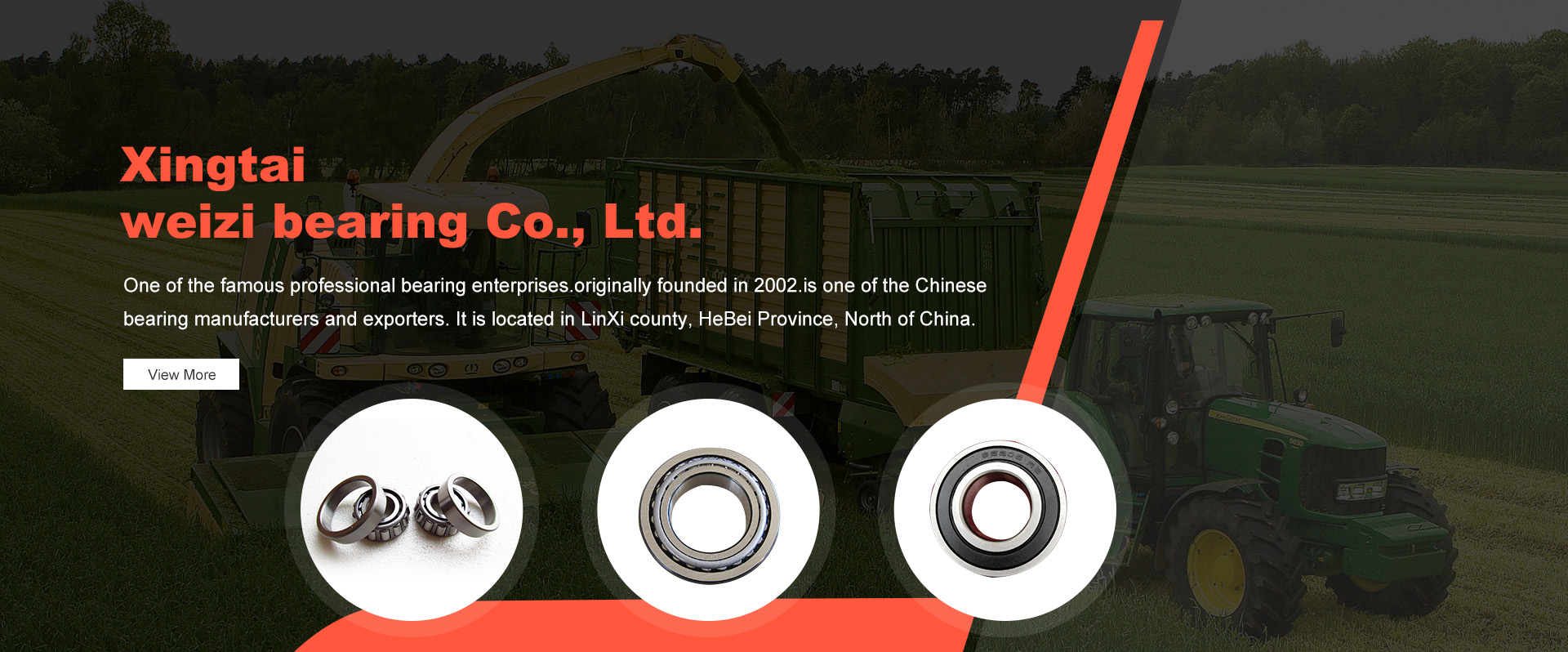
Nov . 20, 2024 00:44 Back to list
spherical roller bearing vs tapered roller bearing
Spherical Roller Bearing vs. Tapered Roller Bearing A Comparison
When it comes to machinery and equipment design, bearings play a crucial role in reducing friction and supporting loads. Two widely used types of bearings are spherical roller bearings and tapered roller bearings. Both serve essential functions but are designed for different applications and operating conditions. This article aims to explore the characteristics, advantages, and appropriate uses of these two types of roller bearings.
Spherical Roller Bearings
Spherical roller bearings are particularly designed to accommodate misalignment. They consist of an outer ring with a spherical raceway and two inner ring raceways that allow for angular adjustment. This design enables them to handle heavy radial loads and moderate axial loads in both directions.
One of the key advantages of spherical roller bearings is their ability to self-align. This self-aligning property makes them suitable for applications where shaft misalignment can occur due to manufacturing tolerances, thermal expansion, or mounting errors. They are commonly used in equipment like crushers, conveyor belts, and large motors.
Spherical roller bearings also exhibit high load-carrying capacity. Thanks to their broad contact area between the rollers and raceways, they can support heavy loads while maintaining stability. Additionally, they often feature large rolling elements that reduce stress and wear over time, contributing to their longevity.
Tapered Roller Bearings
In contrast, tapered roller bearings are primarily designed to support both radial and axial loads. They consist of an inner ring, an outer ring, and tapered rollers that are arranged in such a manner that they can handle forces coming from various angles. The raceways are also tapered, aligning at the apex, which allows them to effectively take on thrust loads in one direction.
One of the major advantages of tapered roller bearings is their efficiency under dynamic loads. They provide excellent performance in applications involving high speeds and heavy loads, such as automotive wheel hubs, transmission systems, and agricultural machinery. Their design allows for the adjustment of internal clearance, which helps ensure optimal performance and prolonged service life.
spherical roller bearing vs tapered roller bearing

Tapered roller bearings are also notable for their ability to accommodate high axial loads. This characteristic makes them easy to adapt for various machinery requiring precision, such as electric motors, gear drives, and machine tool spindles.
Key Differences
While both types of bearings have specific performance advantages, there are essential differences that can influence the choice for particular applications.
1. Load Capacity Spherical roller bearings excel in handling heavy radial loads with their self-aligning capability, while tapered roller bearings are better suited for applications requiring the support of significant axial loads.
2. Misalignment Management Spherical roller bearings can tolerate misalignment better due to their spherical design, but tapered roller bearings require precise alignment to function effectively.
3. Speed Limitations Tapered roller bearings are designed to operate efficiently at higher speeds compared to spherical roller bearings, making them ideal for applications demanding high rotational speeds.
4. Installation and Maintenance Spherical roller bearings may be easier to install in scenarios requiring some misalignment tolerance, while tapered roller bearings need careful preloading and adjustment during installation.
Conclusion
Choosing between spherical roller bearings and tapered roller bearings ultimately depends on the specific requirements of the application. For projects that require heavy radial loads and the ability to accommodate misalignment, spherical roller bearings are the way to go. On the other hand, if the application demands both high radial and axial load capacities, particularly at high speeds, tapered roller bearings are the ideal choice. Understanding the strengths and weaknesses of each type can greatly enhance equipment performance and durability, thereby improving operational efficiency in various industrial applications. Taking the time to select the appropriate bearing type can lead to significant reductions in downtime and maintenance costs in the long run.
Latest news
-
Premium Deep Groove Ball Bearings | High Speed & Reliability
NewsAug.29,2025
-
Durable Scaffolding Clamps - Secure & Reliable Tube Connectors
NewsAug.28,2025
-
Common Failures in Thrust Ball Bearings and Solutions
NewsAug.22,2025
-
How Tapered Roller Bearings Can Take Shock Loads
NewsAug.22,2025
-
Angular Bearings in High-Precision Spindles
NewsAug.22,2025
-
The Impact of Misalignment on Cylindrical Roller Bearing Performance
NewsAug.22,2025
